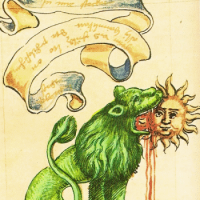Mensagens: 3
Idioma: Esperanto
Lax (Mostrar o perfil) 12 de junho de 2015 10:22:48
Hello, I'm just starting out learning Esperanto, but I've encountered two sentences that just won't make sence: Tio estas homo kaj tio estas viro, and tio estas homo kaj tio estas virino kaj tio estas knabino. Can someone help me? 
In advance thanks.

In advance thanks.
mbalicki (Mostrar o perfil) 12 de junho de 2015 11:06:34
Welcome, Lax, on board! I hope you'll have much fun with Esperanto, as I also do. 
PS In this part of the forum one should write in Esperanto. If you'd like to ask a question in English, then check out the topic En la angla.
PPS I see you're from Norway, so you may also be interested in posting questions in Norwegian, which is what you can do right here.

Lax:If you're looking for the deeper meaning, then you won't find any, because they just some words to practice some basic concepts. Let's divide them into morphemes:Tio estas homo kaj tio estas viro.Tio estas homo kaj tio estas virino kaj tio estas knabino.
Lax:Ti·o est·as hom·o kaj ti·o est·as vir·o.Ti·o est·as hom·o kaj ti·o est·as vir·in·o kaj ti·o est·as knab·in·o.
- ti·o — “that”. It's a correlative (part of speech) in which ti- signifies an indication and -o here is for a thing; similar examples would be ki·o “what” (ki- makes a question) or ti·am “then” (-am is for time).
- est·as — “am, is, are”. In this verb est- is a word root for being (est·i is an infinitive “to be”), and -as is an ending for present tense indicative (person or number don't matter).
- hom·o — “human, person”. The ending -o marks that it's a noun and hom- is a root for human.
- vir·o — “man, male”. It's also a noun (see the -o?) and vir- is a root. By adding only -o it means that you're talking about male, to derive a word for woman you need to say
- vir·in·o — “woman, female”. Just like the above, but with the additional part -in- which signifies the femininity and female gender.
- knab·in·o — “girl”. Here knab- is a new word root; since you already know what -in- part means, then you probably also can deduct what is knab·o in Esperanto, don't you?

PS In this part of the forum one should write in Esperanto. If you'd like to ask a question in English, then check out the topic En la angla.
PPS I see you're from Norway, so you may also be interested in posting questions in Norwegian, which is what you can do right here.
Lax (Mostrar o perfil) 12 de junho de 2015 13:28:47
mbalicki:Welcome, Lax, on board! I hope you'll have much fun with Esperanto, as I also do.Dankon!
Lax:If you're looking for the deeper meaning, then you won't find any, because they just some words to practice some basic concepts. Let's divide them into morphemes:Tio estas homo kaj tio estas viro.Tio estas homo kaj tio estas virino kaj tio estas knabino.
Lax:Ti·o est·as hom·o kaj ti·o est·as vir·o.Ti·o est·as hom·o kaj ti·o est·as vir·in·o kaj ti·o est·as knab·in·o.That exercise you did was to show you that hom·o can apply both to males and females (since both vir·o is a hom·o and vir·in·o is a hom·o) and that vir·o or vir·in·o can apply both to children and adults (since a grown up man is a vir·o and a little girl is a vir·in·o).
- ti·o — “that”. It's a correlative (part of speech) in which ti- signifies an indication and -o here is for a thing; similar examples would be ki·o “what” (ki- makes a question) or ti·am “then” (-am is for time).
- est·as — “am, is, are”. In this verb est- is a word root for being (est·i is an infinitive “to be”), and -as is an ending for present tense indicative (person or number don't matter).
- hom·o — “human, person”. The ending -o marks that it's a noun and hom- is a root for human.
- vir·o — “man, male”. It's also a noun (see the -o?) and vir- is a root. By adding only -o it means that you're talking about male, to derive a word for woman you need to say
- vir·in·o — “woman, female”. Just like the above, but with the additional part -in- which signifies the femininity and female gender.
- knab·in·o — “girl”. Here knab- is a new word root; since you already know what -in- part means, then you probably also can deduct what is knab·o in Esperanto, don't you?
PS In this part of the forum one should write in Esperanto. If you'd like to ask a question in English, then check out the topic En la angla.
PPS I see you're from Norway, so you may also be interested in posting questions in Norwegian, which is what you can do right here.

